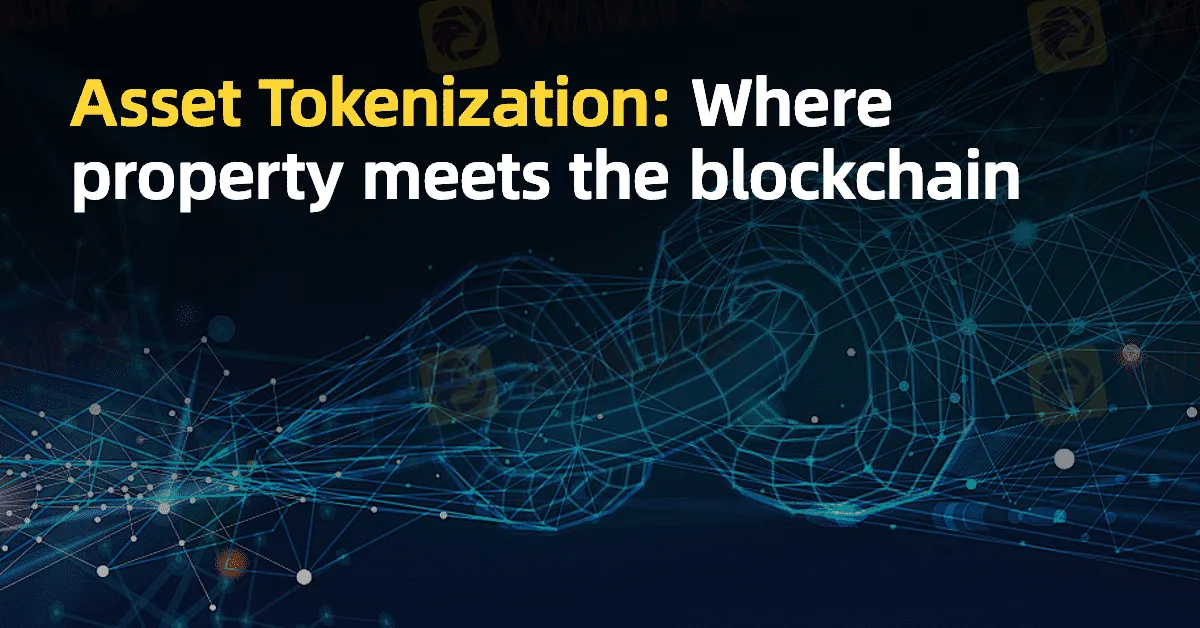简体中文
繁體中文
English
Pусский
日本語
ภาษาไทย
Tiếng Việt
Bahasa Indonesia
Español
हिन्दी
Filippiiniläinen
Français
Deutsch
Português
Türkçe
한국어
العربية
Asset Tokenization: Where property meets the blockchain
Abstract:Asset tokenization is the innovative process of transforming rights to both physical and digital assets into digital tokens on a blockchain.

Understanding Asset Tokenization
Asset tokenization is the innovative process of transforming rights to both physical and digital assets into digital tokens on a blockchain. This process can generate fungible tokens, which are interchangeable, or non-fungible tokens (NFTs), representing distinct assets. The choice of token type hinges on the nature of the asset and its intended application. By enabling tokenization, we can enhance traditional ownership verification methods—like deeds and titles—allowing for more accessible fractional ownership. For instance, tokenizing a commercial property could enable multiple investors to own shares in that property.
Advantages of Asset Tokenization
1. Tokenization allows assets to be divided into smaller, tradable units, facilitating shared ownership among multiple investors.
2. By enabling fractional ownership, tokenization opens the door to asset investments for individuals across various financial backgrounds.
3. Tokenized assets can be more easily traded, potentially enhancing market liquidity.
4. The transparency inherent in blockchain technology ensures that all participants have access to the same information.
5. By reducing the need for intermediaries, tokenization could lower the costs associated with buying and selling assets.
Challenges of Asset Tokenization
1. Legal Recognition Issues: Current legal frameworks may not recognize tokenized asset ownership, creating challenges in enforcement.
2. The rapidly changing landscape of laws surrounding tokenized assets can complicate compliance and diminish investor protections.
3. Tokenized assets, particularly those traded on secondary markets, may experience significant price fluctuations, risking investor capital.
4. Unique assets can be difficult to value accurately, complicating investment decisions.
Conclusion
Asset tokenization marks a transformative step forward in merging real estate with blockchain technology, providing exciting prospects alongside significant hurdles. As this field evolves, stakeholders can explore how fractional ownership and enhanced accessibility can reshape investment landscapes, all while navigating the complexities of regulation and market integration.

Disclaimer:
The views in this article only represent the author's personal views, and do not constitute investment advice on this platform. This platform does not guarantee the accuracy, completeness and timeliness of the information in the article, and will not be liable for any loss caused by the use of or reliance on the information in the article.
Read more

Oil Prices Plunge Again: What's Going On in the Market?
Prices tumble to a 4-year low, shaking investor confidence. What’s next for the market?

Gold Prices Climb Back to $3000: What Should Investors Watch For?
As market uncertainty rises, gold climbs above $3000 again. It's time for investors to rethink their strategies.

Think You’re Too Smart to Fall for an Investment Scam?!
Investment scams are no longer the domain of obvious fraudsters and badly written emails. Today’s scams are polished, convincing, and alarmingly professional. They mimic the language and appearance of legitimate investment firms, targeting everyone from novice investors to seasoned professionals. A single mistake could wipe out years of savings. But by learning to spot the red flags early, you can protect yourself and your finances from these increasingly deceptive traps.

How to protect your money during Black Monday
Black Monday—the day when markets crashed and panic selling took over—reminds us that economic downturns are part of the investing cycle. While such days can trigger fear and uncertainty, being prepared with a well-planned strategy can help protect your hard-earned money. In this article, we’ll explore actionable tips on safeguarding your investments and overall finances during a market crash.
WikiFX Broker
Latest News
Wall Street Funded Establishes Broker in St. Lucia to Reintroduce MetaTrader 5
Think You’re Too Smart to Fall for an Investment Scam?!
ASIC Shuts Down 95 Scam Companies in Major Crackdown on Fraud
Tether Eyes U.S. Stablecoin Launch Amid Crypto Regulation Shifts
Unlicensed Financial and Crypto Services: BaFin Investigates Two Firms
US Warns Filipino Migrants Against Cryptocurrency Scams
CMC Markets Elevates Trading with TradingView Integration
Scam Alert: Victim Loses Rs. 6.3 Million in 'BITFINEW' Investment Fraud
IG Securities Adjusts Margin Rates to Align with Market Volatility
Swiggy, Zepto: Are 10-minute online deliveries killing the Indian corner shop?
Currency Calculator


